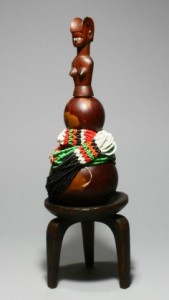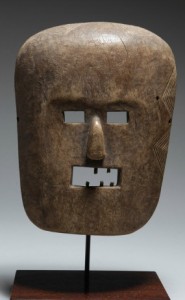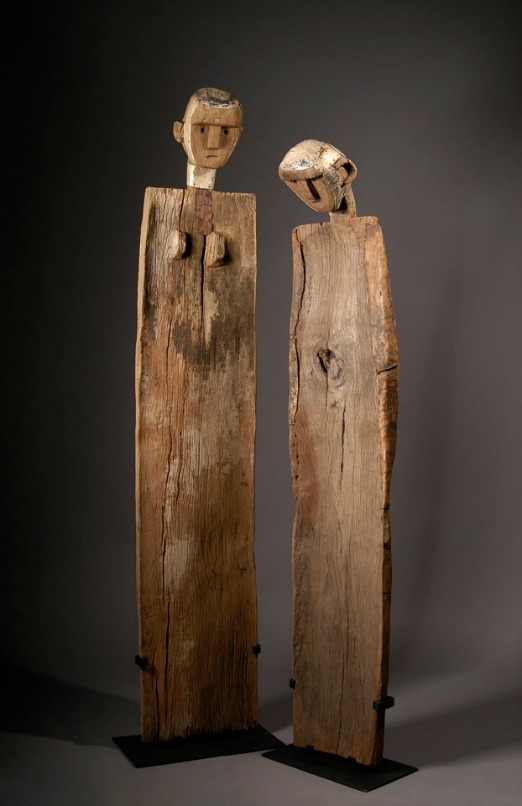 In tomorrow’s Wall Street Journal, I review an exhibition that opened at the Portland Museum of Art on Saturday: Shangaa: Art of Tanzania. It is, according to its curator, Gary van Wyk, the first exhibition in the United States devoted to Tanzanian art, and one of the few period. This material has been shown in Germany, and that’s about it. History is the culprit, as I explain in the article, headlined Objects that Amaze.
In tomorrow’s Wall Street Journal, I review an exhibition that opened at the Portland Museum of Art on Saturday: Shangaa: Art of Tanzania. It is, according to its curator, Gary van Wyk, the first exhibition in the United States devoted to Tanzanian art, and one of the few period. This material has been shown in Germany, and that’s about it. History is the culprit, as I explain in the article, headlined Objects that Amaze.
But what’s it doing in Maine? Maine is the whitest state in the country, with 96.9 percent of its population described as white in the 2010 census. So many museums nowadays are programming to their populations — a trend I have some qualms about — that it seems a lot contrarian, if not a little odd. (Ok, it’s true, I learned someway into the story that this show originated at Queensborough Community College in New York City’s most-diverse borough.)
 But always there’s a reason — and in this case it is a fortuitous personal connection. The Portland museum’s director, Mark Bessire, was a Fulbright Fellow in Tanzania. He and his wife, Aimee, who now teaches courses in African art and culture, African photography, contemporary art and history of photography at Bates College in Maine, lived there for two years. As van Wyk, a transplanted Zimbabwean who at first specialized in South African art, tells the tale, in 1997 he commissioned Aimee as well as Mark to share their experiences for The Heritage Library of African Peoples, which he edited. That’s when he first encountered Tanzanian art, quickly realizing that it was understudied, underexposed, and therefore underappreciated.
But always there’s a reason — and in this case it is a fortuitous personal connection. The Portland museum’s director, Mark Bessire, was a Fulbright Fellow in Tanzania. He and his wife, Aimee, who now teaches courses in African art and culture, African photography, contemporary art and history of photography at Bates College in Maine, lived there for two years. As van Wyk, a transplanted Zimbabwean who at first specialized in South African art, tells the tale, in 1997 he commissioned Aimee as well as Mark to share their experiences for The Heritage Library of African Peoples, which he edited. That’s when he first encountered Tanzanian art, quickly realizing that it was understudied, underexposed, and therefore underappreciated.
Through Shangaa, he convinced me. I’m posting a couple of pictures here of items that I don’t talk about in the review — because the notables were too numerous to mention.
But there’s a larger point here, about museum programming: what if the museum director had not lived in Tanzania? Would this show ever have been seen in Maine? I hope this exhibit does so well that museums learn that they can mimimize, rather than emphasize, identity exhibitions and identity acquisitions. I wish the public shows them that if it’s great art, it doesn’t matter which tribe, which nationality, which race created it.
I also hope that there are more such serendipitous connections out there, bringing art to places it might not “logically” go.
Photo credits: Courtesy of the Portland Museum of Art

